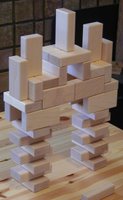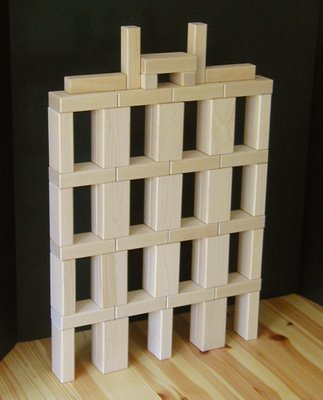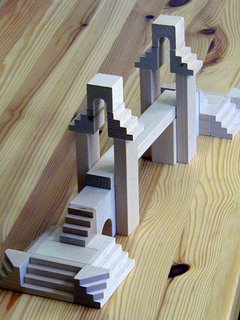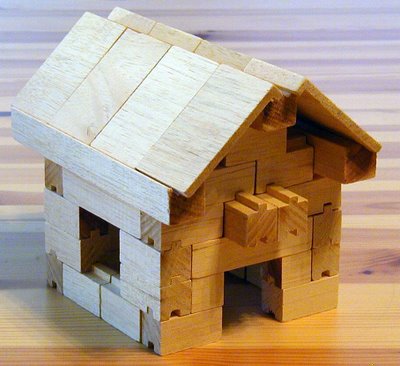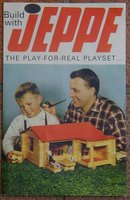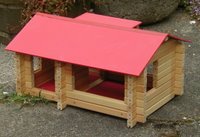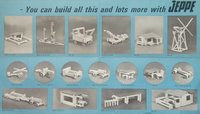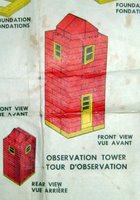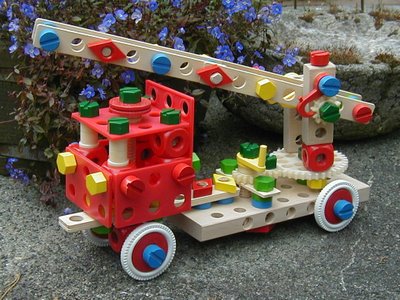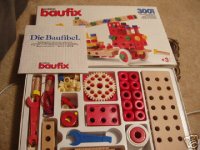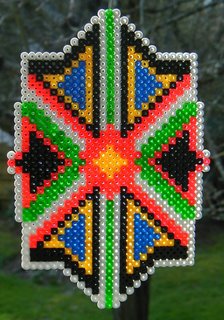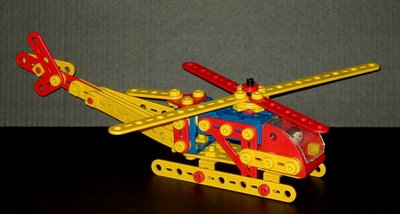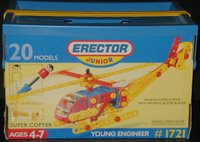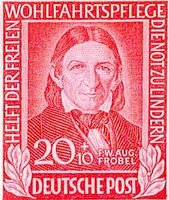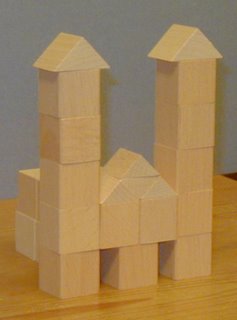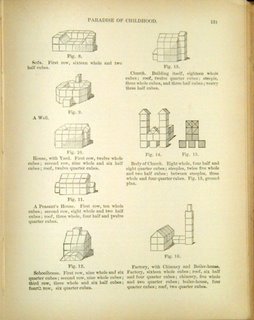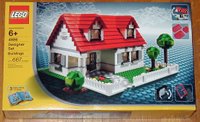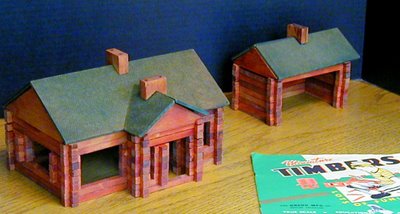 Lincoln Logs
Lincoln Logs weren't the first interlocking structure set ("linking logs"), but they are by far the best known.
American Logs came in a close second, in their day. Both of these had two different cross-section sizes, in the 1/2"-3/4" range, at some point in their history. Many other makers have imitated them at various times, mostly in similar sizes, but also larger and smaller.
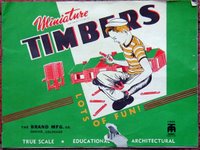 Jeu Jura
Jeu Jura in Europa and
Roy Toy in the US both have had smaller square/rectangular sets, which I have shown here previously, but the smallest of what I consider "real" construction sets (there have been tinier Lincoln Log sets in keychain and pen-top containers, but I consider these toys-of-toys) are the ~5/16" square
Miniature Timbers from The Brand Mfg. Co. of "P.O. Box 6525, Stockyard Station, Denver 16, Colorado."
From the logo and the address, the "Brand" in the name appears to refer to cattle branding, not "brand name," but perhaps it also referred to the owner's name? The address style and illustrations all suggest 1950s production.

Roofs are probably where construction sets differ the most, with solutions ranging from folder cardstock to strips of wood to molded plastic.
Miniature Timbers used masonite pieces with the textured side up, which turns out to be rather effective at representing roofing material such as asphalt shingles. The roofs are held by pieces of dowel extending down from the chimneys into holes in the roof pieces. That does have the odd effect that there are chimneys places where there would be no stove or fireplace underneath, such as just inside the front door opening or the middle of the garage, but hey ...

Set sizes ranged from 100-piece #0 to 800-piece (!) #3; the structures shown are buildable with 250-piece set #1.
Miniature Timbers were advertised as 1/4" scale, and illustrated with 1950s Lionel O gauge trains. I am sure the combination provided good play value for those who used the sets that way, though they likely wouldn't satisfy a scale model railroader.
Be that as it may,
Miniature Timbers are good fun, and good Block Play.
 Sometimes it seems like most of my posts apologize for not being "real" Block Play, but instead being a near-miss.
Sometimes it seems like most of my posts apologize for not being "real" Block Play, but instead being a near-miss.

